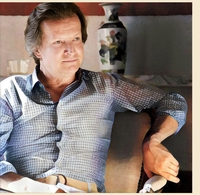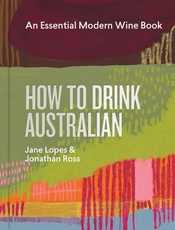|
|
 |
|
February 14, 2024
Anyone in the wine trade who has visited Bordeaux more than once and has not yet stumbled across a Lurton or two, at least figuratively, must be regarded as still running in amateur mode. It would be like saying, “I know Napa,” and never having been poured a welcoming glass of wine by someone named Mondavi.
The prolific Lurton clan has for years been making fine wines at a couple of dozen different châteaux or more, either as owner or consultant. Without even checking it out, I can count on the fingers of one hand at least six Lurton vintners. Moreover, even though they call Bordeaux home, there are at least a couple of Lurtons who have spent more than a few days every month up in the air visiting properties located in both hemispheres and on at least four continents.
 Which brings us to François Lurton, one of the more-prolific clan members, owning singly or jointly wine estates in France, Spain, Chile and Argentina. Some of the better-known Francois Lurton brands are Mas Janeil from France, Campo Eliseo – with Dany and Michel Rolland – in Spain, Hacienda Araucano in Chile, and Bodega Piedro Negra in Argentina. Which brings us to François Lurton, one of the more-prolific clan members, owning singly or jointly wine estates in France, Spain, Chile and Argentina. Some of the better-known Francois Lurton brands are Mas Janeil from France, Campo Eliseo – with Dany and Michel Rolland – in Spain, Hacienda Araucano in Chile, and Bodega Piedro Negra in Argentina.
I recently caught up with François by Zoom in one country where he doesn’t make wine – the U.S. – while he was attending a big wholesalers’ convention in Las Vegas, where he was on the program as well as working to promote his “Fumées Blanches,” an affordable Vin de France Sauvignon Blanc.
“How’s business?” was an obvious first question. “Last year, restaurants were still working to reduce inventory, but this year there is more interest in buying,” he replies. “A lot of people say they are coming to Wine Paris,” the February event co-sponsored by Vinexpo whose American attendance depends heavily on whether the visitors are in a buying mood or not.
That said, Lurton adds, “Distributors are now more interested in spirits. It’s difficult to get any attention for wine!” Not that he is at a complete loss in this shift of interest. Lurton has for some time been sourcing grapes from the Gascony region on the Atlantic Coast to make some of his affordable French wines, and to that end was persuaded to produce and market the legendary spirit of the region.
“We are going to launch an Armagnac this month,” he says, and sounding quite excited by the prospect, even though it is not Lurton’s first venture into spirits. In late 2016, he created Sorgin gin and Léonce vermouth. “The gin is made from Sauvignon Blanc grapes,” he says, “and not made from any grain, so it retains those citrus aromas.”
Lurton also sources part of his Sauvignon Blanc from Gascony for Fumées Blanches, which retails in the U.S. for $18, and also obtains the white grape from the Loire, Languedoc and elsewhere. This discussion leads to three other related discussions.
One concerns French wine drinkers’ love of terroir-specific wines from traditional regions. The term “Vin de Pays” on a label in France has generally relegated that wine to supermarket bins of Paris to sell for a couple of euros regardless of its quality or what it costs to make it. A few years ago, Lurton sat on a prestigious committee to develop a new name for this old category of wines that do not come from a recognized DOC. In 2009, they came up with the answer — “Vin de France.”
“There is still a certain resistance in France to these terms,” he admits, “but less so among young people.” To illustrate, while the blend of Fumées Blanches that reaches the U.S. has a Vin de France label, the one sold in France is region-specific in the origin of its grapes – a Côtes de Gascogne – and sells for the equivalent of less than $8.
A second difference with Fumées Blanches is that it is, Lurton says, “one of our few wines that is not organic, but we are working on that.” For some time, all the Lurton estates under his control are either organic or biodynamic. However, buying grapes for high-volume, affordable wines often means purchasing them from growers who are not organic, often because of the labor and certification costs involved.
Which leads to a third interesting topic involving Fumées Blanches – climate change and global warming. Single-estate or single-vineyard wines are becoming more frequently influenced by climate change, good or bad, as their weather can become too hot or too dry to remain ideal for terroir-specific wines. (Europe is increasingly allowing drip irrigation in its vineyards.)
“But with wines such as Fumées Blanches, which blend grapes from different origins, we can profit from the quality of the vintage in each area,” Lurton says. In other words, the best affordable wine for any specific year may be a blend of different regions and not ones made from a single vineyard or area.
Lurton also points out that while his bread-and-butter wines are basic affordable French wines, he does produce higher-quality, collectible wines. “For example, our Piedra Negras Chacayes from Argentina sells for about $100 and has been featured as a Top 10 wine in Wine Spectator’s annual ranking.”
Finally, Lurton invites everyone to come see him – or at least his wine properties. “We have great tourist facilities at all our properties,” he says. “We are also the most developed in Argentina, with a team of five people to receive guests.”
We’ll come thirsty.
Posted by Roger Morris at 2:15 PM
|
|
February 7, 2024
I know, I know...we’re into February, and the conventional time for making resolutions is more than a month behind us. But if you belong to a gym, look at all the now-unused exercise equipment that was mobbed a month ago and you’ll see conclusive proof that resolutions that hold their resolve are ones that are mulled over at length and then kicked into gear right about now.
Right now is a perfect time to join me in my resolution to devote sharp attention in the year ahead to the wines of Australia’s state of Victoria. The most important reasons for this are provided by the wines themselves: They are highly varied and also sharply place-specific due to the many different appellations, micro-climates, and soil concentrations within Victoria. Many are very fresh in a contemporary, cool-climate style that stands in contrast to the sometimes-soupy Shiraz behemoths that were once Australian wine’s calling card. Yet most of the wines deliver abundant flavor despite their freshness and verve, and the range of grape varieties that can excel somewhere in the state is truly remarkable. That’s great for more adventuresome wine lovers, but those more inclined to concentrate can also take a  very deep dive into the Burgundian varieties of Chardonnay and Pinot Noir and find lots of examples that can be described as “Burgundian” with a straight face—which simply isn’t true in most global locations where these grapes are grown. very deep dive into the Burgundian varieties of Chardonnay and Pinot Noir and find lots of examples that can be described as “Burgundian” with a straight face—which simply isn’t true in most global locations where these grapes are grown.
Commercial and political considerations are not as sexy as vinous ones for recognizing the present as a time for wines from Victoria to shine, but neither are they without importance. Australia has been engaged in a trade war with China for several years, one that entailed a virtual ban on Aussie wine imports into China—which was Australia's leading market across the world. That has freed up wines that were simply unavailable here in the USA, and though there are signs that the trade dispute may end before long now, one suspects that Australia’s wine industry will remain strongly motivated to maintain a diversified presence across global markets that will make it easier to find top Victoria-grown offerings here.
Timing is now particularly auspicious for the American market to be receptive to a resurgence of Aussie wines generally and ones from Victoria specifically. “Auspicious” may not be quite the right word, as what’s happening now is less the advent of something wonderful than the passage of something that was borderline tragic. The sad fact is that the amazing commercial success of...gulp...Yellow Tail had the effect of making almost a whole generation of young consumers think of Aussie wine as cheap plonk.
This phenomenon might not suit your idea of a “tragedy,” I admit. But for someone like me—who traveled to Australia six times to really learn about appellations and boutique producers to help inform American wine lovers of the multiplicity of riches to be enjoyed—it was heartbreaking to see a single, formulaic brand mislead Americans into painting an entire continent’s industry with a single, blandly broad brush.
I don’t mean to be overly dramatic, and I don’t blame anybody for the sad fact that Aussie wine suffered a ghastly setback just as it was poised to attain its rightful place near the pinnacle of excellence in the minds of American consumers. The key difference between a tragedy and an atrocity is that tragedies aren’t anybody’s fault—they just happen—as Aeschylus or Euripides can inform you. Hey, I drank jugs of Concha y Toro when a was flat broke in graduate school, so I don’t look down on Yellow Tail buyers. But just as it took almost a generation for great wines from Chile like Almaviva, Don Melchior, Seña and Chadwick to become collectable icons, we’ve simply had to wait for Australia’s nightmare to pass. Time doesn’t heal everything, but some things can’t be healed by anything but time.
Over the span that has brought us to the present, it is no secret that climate change has been a major variable in its own right, quite aside from commercial factors. As it happens, it is a variable that has actually aided wine quality in Victoria even as it has imperiled other Australian regions that aren’t as far south in the direction of Antarctica and the cold Southern Ocean.
Over the months ahead, I look forward to putting a lot of specific “flesh” on the “bones” of these introductory observations in the form of specific wine recommendations. I’ve already got notes on quite a number of wines for that purpose, but for now, I’ll leave this as a “teaser.” If you wish to do a little thinking ahead of your drinking, I can highly recommend the recently published (2023) How to Drink Australian by Jane Lopes and Jonathan Ross (along with a few supplementary contributors). At nearly 500 pages, it is a terrific reference to the current state of the art in Australian wine, yet it is written and set out in an inviting and informal manner in keeping with Aussie wine culture. Available for less than $40 even in hardcover on Amazon, it is a terrific investment toward a future of deliciousness and fun.
All for now, but more to come!
Posted by Michael Franz at 12:19 PM
|
|
 |
|